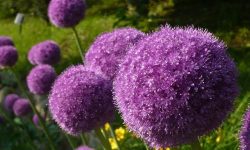Orchids are among the most captivating flowering plants, admired for their intricate blooms and elegant presence. One of the most critical elements in orchid care is watering. Too much or too little can hinder growth, damage roots, and prevent flowering.
Understanding how often to water orchids for vibrant blooms all year round requires a detailed look into their natural environment, specific needs, and the changing conditions throughout the seasons. This guide provides the insights needed to help orchids flourish continuously.
Understanding Orchid Hydration Needs

The watering requirements of orchids are distinct from those of other houseplants. Originating in tropical and subtropical climates, most orchids are epiphytes, meaning they grow on other plants rather than in soil. In their natural habitat, they absorb moisture from rain, air humidity, and surrounding surfaces, which informs their watering patterns in cultivation.
Watering frequency is primarily influenced by the type of orchid, the potting medium, and the growing environment. Unlike plants that thrive in constantly moist soil, orchids prefer a cycle of wet and dry conditions. Their roots need to breathe, and staying wet for too long leads to rot. Therefore, ensuring the roots dry out slightly between waterings is vital for orchid health.
Environmental factors such as temperature, light, humidity, and airflow also contribute to how often orchids should be watered. An orchid in a warm, bright room will lose moisture faster than one in a cooler, shaded space. A deep understanding of these variables helps tailor a watering schedule that promotes regular blooming throughout the year.
Identifying the Right Orchid Type
Not all orchids are created equal, and their watering schedules are no exception. Phalaenopsis orchids, the most common variety, are more forgiving and require consistent but moderate moisture. Oncidium orchids, on the other hand, prefer slightly drier conditions between waterings. Cattleya orchids require a dry spell before the next watering, while Dendrobiums have specific seasonal needs tied to their dormancy cycle.
Recognizing the type of orchid you own is the first step to crafting an effective watering routine. Different species have evolved to adapt to unique environments, and mimicking these conditions at home leads to healthier plants and more frequent blooming. The key lies in observing your orchid and adjusting your care practices to suit its needs, especially when aiming for year-round vibrancy.
An important consideration is whether the orchid is in active growth or dormancy. During periods of active growth, typically marked by the emergence of new leaves or flower spikes, orchids require more frequent watering. In contrast, during dormancy, watering should be reduced to prevent overhydration and root damage.
Potting Medium and Its Impact on Watering
The medium in which orchids are planted plays a significant role in determining how often they should be watered. Unlike soil-based plants, orchids are typically grown in bark, sphagnum moss, coconut husk, or a combination of airy materials. Each medium retains water differently, affecting the drying time between watering sessions.
Bark-based mixes drain quickly and require more frequent watering, especially in warm or dry environments. Sphagnum moss retains moisture longer, so orchids planted in it may only need water once a week or less. Coconut husk provides a balance between drainage and moisture retention, making it suitable for growers who prefer a less frequent watering schedule.
Another factor to consider is the size and type of the pot. Plastic pots hold moisture longer than clay pots, and pots with fewer drainage holes can lead to water accumulation, increasing the risk of root rot. Choosing the right combination of medium and container helps regulate the moisture around the orchid’s roots and supports consistent flowering.
Seasonal Variations and Their Influence
Watering orchids is not a one-size-fits-all activity, especially when considering the influence of the seasons. During spring and summer, when orchids are typically in their active growing phase, they require more frequent watering due to higher temperatures and increased light exposure. The plant is expending more energy, developing leaves, and preparing to bloom, all of which demand hydration.
As the temperature drops in autumn and winter, orchid growth slows, and their need for water decreases. Lower light levels, cooler air, and reduced evaporation mean that the growing medium stays moist longer. Continuing to water orchids as frequently as in the warmer months can lead to overwatering and root problems.
A practical approach during cooler seasons is to monitor the weight of the pot and the texture of the potting medium. If the medium feels dry and the pot is light, it may be time to water. If it still feels moist, waiting another day or two is often beneficial. Adapting to these subtle changes ensures that orchids remain healthy and poised for blooming even during periods of dormancy.
Indoor vs Outdoor Orchid Watering
The environment in which orchids are kept greatly affects how often they need to be watered. Indoors, conditions are relatively stable, with controlled humidity, temperature, and light levels. This consistency allows for a more predictable watering schedule, especially when using humidity trays or humidifiers to support moisture in the air.
Outdoor orchids, however, face fluctuating weather conditions. Rainfall, wind, sun exposure, and air circulation all influence the drying rate of the potting medium. In humid climates, orchids might require less frequent watering, while in dry, hot regions, daily monitoring may be necessary to prevent dehydration.
For growers who move their orchids between indoors and outdoors seasonally, adjusting the watering routine is critical. Bringing orchids inside during the cooler months requires a recalibration of how moisture is managed, ensuring they are not overwatered in the lower light and cooler temperatures typically found indoors.
Watering Techniques for Optimal Results
How you water your orchids matters just as much as how often. The goal is to thoroughly saturate the potting medium without leaving standing water at the bottom of the pot. Using room-temperature water helps avoid shocking the roots, and watering in the morning allows excess moisture to evaporate during the day, reducing the risk of fungal issues.
Orchids can be watered from the top using a watering can or placed in a basin to absorb moisture through the drainage holes. Soaking the pot for about 10 to 15 minutes and then allowing it to drain completely is an effective method. Avoid letting water sit in the crown of the plant, as this can lead to rot, especially in varieties like Phalaenopsis.
Misting can supplement hydration in dry environments but should never replace deep watering. While it increases ambient humidity and can moisten aerial roots, it does not adequately hydrate the entire root system. Therefore, misting is best used as an additional measure rather than the primary watering method.
Monitoring for Signs of Overwatering or Underwatering
Maintaining a consistent yet flexible watering routine requires close observation of your orchid’s health. Overwatered orchids often exhibit yellowing leaves, limp or mushy roots, and a foul odor from the potting medium. In severe cases, the plant may lose its leaves and fail to produce new growth.
On the other hand, underwatered orchids show signs of dehydration such as shriveled pseudobulbs, wrinkled leaves, and brittle roots. The plant may stop blooming or produce small, weak flowers. These symptoms are often reversible with proper hydration, but prolonged neglect can cause permanent damage.
Learning to interpret these visual cues allows you to fine-tune your watering routine. A healthy orchid will have firm, green roots, vibrant leaves, and steady growth throughout the year. Monitoring your plant regularly, especially after changes in environment or routine, helps catch issues early and supports long-term blooming success.
Boosting Blooms with Balanced Care
Consistent watering is just one part of encouraging vibrant orchid blooms year-round. Proper lighting, temperature, humidity, and fertilization work in tandem to support flowering. Orchids that receive appropriate amounts of light and nutrients along with proper watering are more likely to bloom frequently and produce large, colorful flowers.
Fertilizing with a balanced orchid-specific formula during the growing season enhances the plant’s energy reserves, making it more resilient and productive. However, over-fertilization can lead to salt buildup in the potting medium, which can interfere with water absorption. Rinsing the medium occasionally and following recommended dilution rates help maintain optimal conditions.
Pairing these practices with attentive watering ensures that orchids remain in top health and continue to bloom with minimal stress. A well-cared-for orchid rewards the grower with a stunning floral display that can brighten any space throughout the seasons.
Factors That Affect Long-Term Watering Success
Long-term success in orchid care depends on more than just adjusting watering frequency. A grower’s ability to adapt to changes in the environment, plant behavior, and aging potting materials determines how well the orchid responds over time. As orchids grow, their needs evolve, and the watering routine may need to shift accordingly.
Repotting every one to two years refreshes the potting medium and helps maintain good drainage and aeration. Over time, bark and moss break down, retaining more water and risking root rot. Recognizing when the medium has degraded is crucial for preventing water-related issues and supporting healthy root development.
In addition, being consistent with observation and record-keeping can provide valuable insights. Noting when the orchid blooms, how often it requires watering, and how it reacts to environmental changes allows for more accurate adjustments. This proactive approach enables growers to create ideal conditions that foster continuous flowering.
FAQ about How Often to Water Orchids
How often should I water Phalaenopsis orchids?
Phalaenopsis orchids typically require watering every 5 to 7 days, depending on temperature and humidity. Allow the medium to dry slightly before watering again.
Do orchids need more water during the growing season?
Yes, orchids often need more water in spring and summer when they are actively growing. Monitor the medium and adjust watering based on environmental conditions.
Can I mist my orchids instead of watering?
Misting can help with humidity but does not replace thorough watering. It’s best used as a supplement, especially for aerial roots.
How do I know if I’m overwatering my orchid?
Signs of overwatering include yellowing leaves, soggy roots, and a musty smell. Letting the medium dry out between waterings can help prevent this issue.
What’s the best time of day to water orchids?
Morning is ideal because it allows excess moisture to evaporate throughout the day, reducing the risk of fungal diseases.
Conclusion
Knowing how often to water orchids for vibrant blooms all year round is both an art and a science. It requires an understanding of your orchid’s species, the type of potting medium, and the environment in which it lives. With careful observation and thoughtful adjustments, you can create a watering routine that supports healthy growth and spectacular blooms across every season.
Orchids may seem finicky at first, but with patience and consistency, their care becomes intuitive. Watering, when done correctly, sets the stage for a stunning floral performance. As your understanding deepens and your confidence grows, the joy of seeing orchids in full bloom—again and again—becomes one of the most rewarding aspects of gardening.






